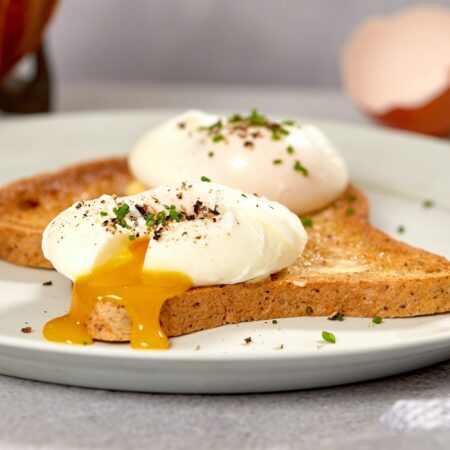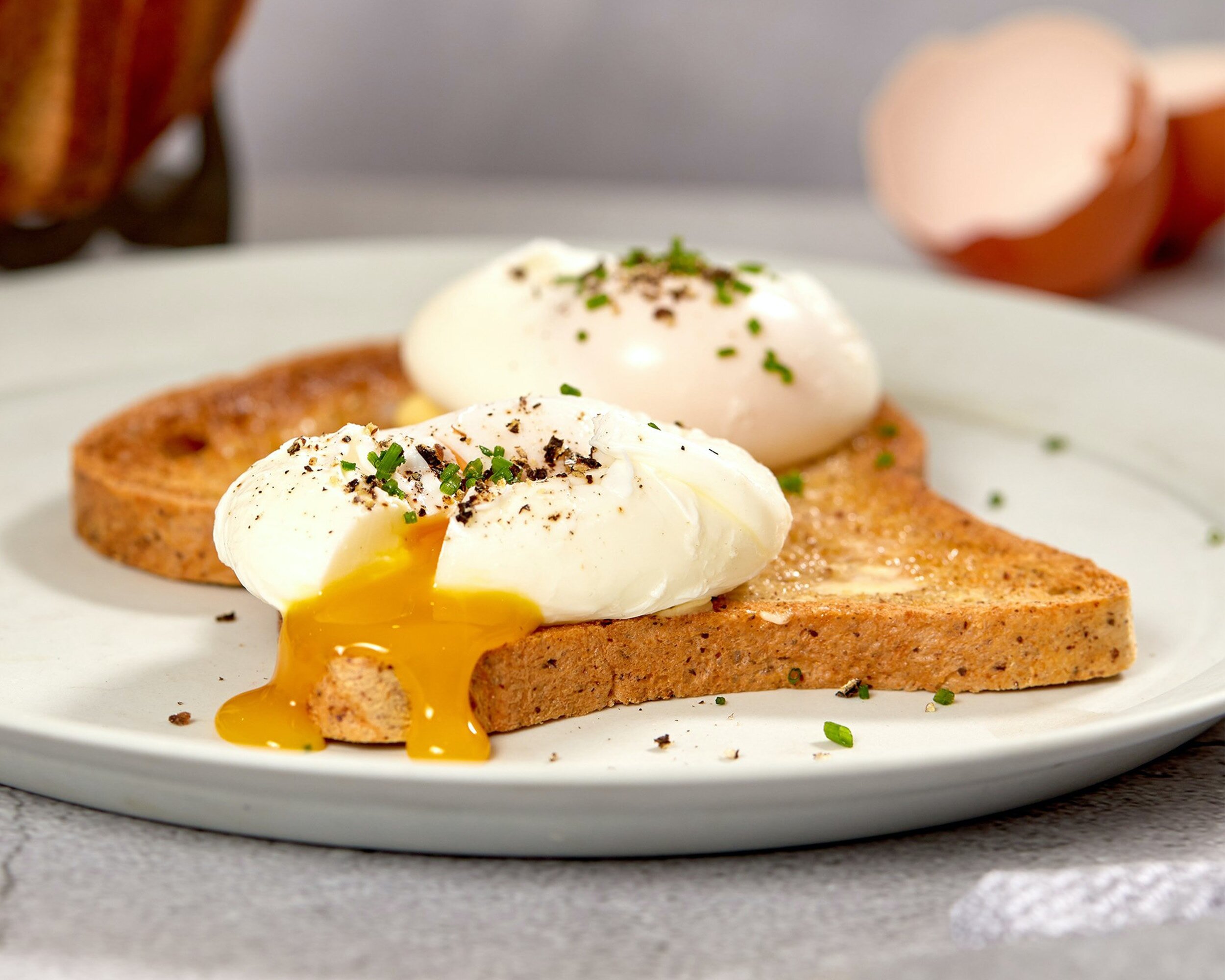The secret of poaching eggs
Poaching eggs is a culinary technique that combines simplicity with sophistication. Although it may seem intimidating at first, it is actually a relatively simple way to prepare delicious poached eggs. In this article, we'll take a closer look at poaching eggs, sharing step-by-step instructions and some tips for perfectly poached eggs.

What is poaching?
Poaching is a cooking technique in which food is gently cooked in hot water without the food being completely submerged. It is a popular method for preparing eggs because it results in a soft, creamy yolk and a silky white.

Fresh eggs
When poaching eggs, it is important to use fresh eggs for the best results. Fresh eggs have firmer egg whites and a healthy yolk, which helps retain texture during poaching. Older eggs may have a thinner protein that is more difficult to control, which has a negative effect on the egg.
When choosing eggs for poaching, keep the following in mind:
- Freshness: Check the expiration date on the package or, if you have access to fresh farm eggs, choose the most recent eggs available.
- Appearance: Look at the shell of the egg. Fresh eggs usually have a firm, smooth shell without cracks or damage.
- Floating test: Some people use the “floating test” to judge the freshness of an egg. Fill a bowl with water and place the egg in it. Fresh eggs will sink to the bottom and lie flat on the bottom. If the egg rises slightly or floats upright, it is older and possibly less suitable for poaching.
It's worth investing in quality, fresh eggs if you plan to prepare poached eggs, as freshness can have a significant impact on the end result. Fresh eggs will help you create beautiful, tasty poached eggs.

Why add vinegar to the water?
Poaching is an art in itself, and when it comes to eggs, the addition of vinegar can make a big difference in the outcome. Poaching eggs with vinegar is a technique embraced by many chefs to achieve those perfectly poached eggs where the yolk is soft and creamy and the white holds together nicely.
Solidify: Vinegar helps with the coagulation of proteins. Adding a small amount of vinegar to the poaching water will make the water slightly acidic. This more acidic environment helps the protein to coagulate and become more compact more quickly. This keeps the egg white nicely together and prevents it from spreading in the water.
Shape retention: Vinegar helps form the poached egg. It causes the egg white to wrap around the yolk and helps create a nice, round shape. This is especially useful when serving poached eggs on toast or in dishes where shape is important.

Poached eggs
Equipment
- Pan for the water and vinegar
- Slotted spoon
- Tea or coffee cup
- Kitchen paper or tea towel
Ingredients
- Farm-fresh eggs
- Water
- Vinegar
- Salty
Instructions
- Prepare the water: Fill a wide saucepan with water, preferably with a low edge so you can easily add and remove the eggs. Add a tablespoon of vinegar and a pinch of salt to the water. Vinegar helps hold the protein together and gives it a better shape.
- Heat the water: Bring the water to a slow boil over medium heat. Make sure it is not bubbling or in a frenzied boil, but remains just below boiling point.
- Crack the egg into a bowl: Carefully crack a fresh egg into a bowl or small cup. This makes it easier to gently slide the egg into the water.
- Add the egg
- Cooking time: Poach the egg for about 3 minutes for a soft-boiled yolk or longer if you want a firmer yolk. Keep the temperature of the water just below boiling point and make sure it does not boil.
- Remove the egg: Use a slotted spoon to carefully remove the poached egg from the water. Drain the egg on paper towels to remove excess water.



